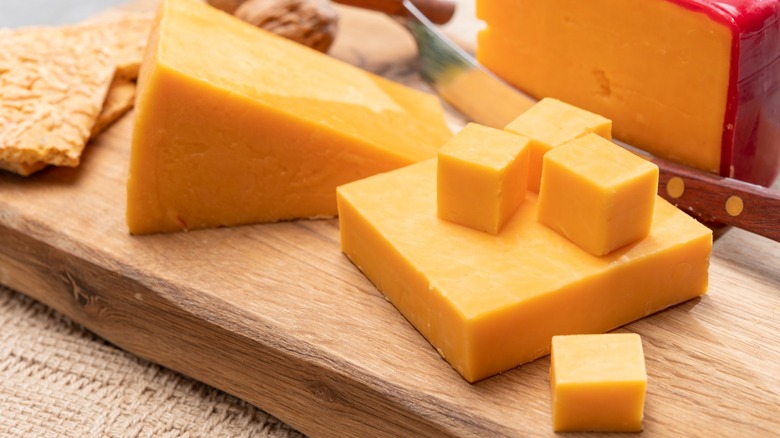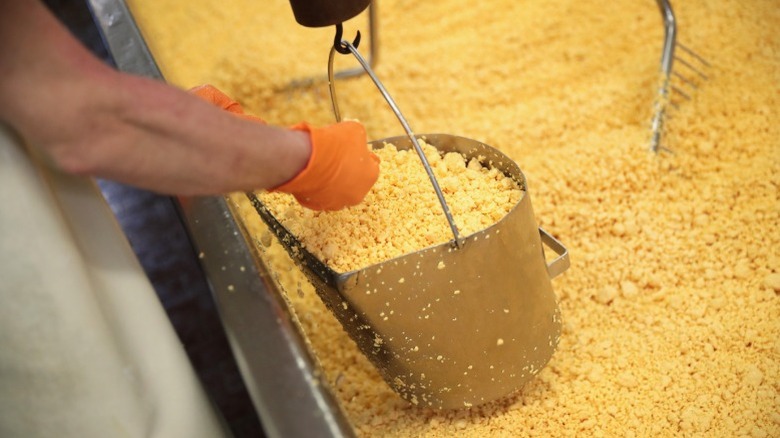This Is How Much Cheese Wisconsin Actually Makes – And The Numbers Are Wild
Wisconsin is the land of cheese. While widely known as the Badger State, it is also called America's Dairyland. (If you're an NFL fan, you may have seen evidence of the state's Dairyland status in the form of spectators wearing cheesehead hats at Green Bay Packers games.) The amount of cheese that the state actually produces is mind-boggling.
According to a Dairy Farmers of Wisconsin report, in 2023, Wisconsin manufactured 3.5 billion pounds of cheese. This number accounted for over 24% of the total cheese produced in the United States in the same year, which was a whopping 14.2 billion pounds. In fact, if you counted Wisconsin's output separately from the rest of the country, it would have been the fourth-highest on the planet. The state is responsible for over half the feta and parmesan (plus a few other kinds of cheese) made in the U.S. Over 1 million cows live in Wisconsin, and 90% of their milk goes toward cheese-making.
America's Dairyland creates more than 600 types of cheese. Specialty varieties comprised 27% of the total in 2023. This represents roughly half of all specialty cheese made in the US. By definition, these are items with a limited scope of production that have unique ingredients and flavor profiles. (You might not even know about some of these cheeses.) Examples of the kinds made in Wisconsin include Cajun-spiced curds and smoked cheddar.
How Wisconsin became the cheese capital of America
Clearly, Wisconsin cannot be separated from its cheesy legacy, but how did it become a hub for production? Although the process of cheesemaking dates back thousands of years, it didn't reach Wisconsin until the early 1800s. Swiss migrants introduced Swiss cheese, one of the first varieties processed in the state. Italians brought mozzarella, the Dutch are responsible for gouda, and Germans introduced limburger. (Wisconsin is now the only U.S. state that produces this cheese). In 1841, Anne Pickett built the state's first cheese factory.
Along with increasing industrialization in the late 19th century, traditional farm-to-factory systems were established. By 1900, Green County in southwestern Wisconsin had one factory for every 2.8 square miles of land. As output increased, quality remained vital. In 1890, Stephen Babcock developed the Babcock test as a way to measure the butterfat quantity in milk and ensure its value for cheesemaking. By the time the 1920s rolled around, the state had become the first to grade the product on quality. Now, there are more licensed cheesemakers in Wisconsin than in any other state. It is also home to the country's only program for becoming a Master Cheesemaker, established in 1994.

